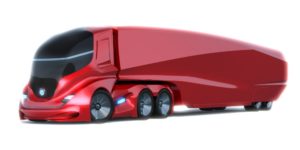Every stone thrown into a pond creates ripples. Every advance in technology does the same.
The late Stephen Hawking said that we were progressing too quickly. Along with other technology and science notables, he argued for a slowing down of development in Artificial Intelligence (AI).
Most current “AI” is actually machine learning. As computing speed increases exponentially, the ability of a computer to calculate, test hypotheses and weigh varying outcomes increases as well. Computers can now beat the best humans at every game ever invented. From Chess to Go, and from Texas Hold ‘Em to Ms. Pac Man, binary geniuses are sorting through billions of possibilities, and even being credited with rudimentary “intuition.”
But Machine Learning isn’t intelligence. A computer can sort through every chess move possible, but has trouble deciding what to do when a person with a bicycle steps out between two cars. What if the correct answer is to swerve into oncoming traffic? A computer can’t make that call.
Robots on the Roads
That doesn’t mean you can be smug about what is coming. Take autonomous trucks. Clearly they aren’t smart enough (yet) to negotiate narrow city streets, bumper to bumper traffic jams or unload oddly-shaped cargo. That would require some real intelligence. But they don’t have to. They can just take care of the 80% of the easy stuff, long haul driving. Automatically driving great distances on relatively clear roads is completely feasible right now.
 What if autonomous trucks were limited to driving from 8:00 PM to 6:00 AM? A few lanes on interstate highways could easily be electronically tagged for higher speed, and robot-truck only use. They can follow more closely, having both quicker reaction times and the connected ability to “see” what is happening further ahead. A truck that doesn’t have to stop for food or sleep could cover a lot of ground in ten hours of high speed driving. Daytimes would be reserved for human-operated local delivery.
What if autonomous trucks were limited to driving from 8:00 PM to 6:00 AM? A few lanes on interstate highways could easily be electronically tagged for higher speed, and robot-truck only use. They can follow more closely, having both quicker reaction times and the connected ability to “see” what is happening further ahead. A truck that doesn’t have to stop for food or sleep could cover a lot of ground in ten hours of high speed driving. Daytimes would be reserved for human-operated local delivery.
Ripples in the Pond.
How much would that affect trucking and other industries?
There would be far fewer driver jobs, although most drivers would likely be closer to home.
Traffic would be greatly lessened during the day. Good, you say? Tell that to the paving contractors, sign companies, crane operators, orange cone manufacturers, lighting and signal electricians or bridge builders. It could be decades before we have to expand highway capacity again. With the speed of technological advancement, decades could translate into “never.”
Is this good news for truck stops, all night diners, and budget motels? Heavy equipment manufacturers? Civil engineering companies? Public sector spending on highway construction is almost $100 billion every year. For comparison, that’s about the size of the whole digital/streaming TV and video industry.
Returning to the trucking industry itself, I doubt that trucks will remain as “one size fits all.” Current testing is on models than can be autonomous, but also accommodate a human driver. The latter will go away. Robotic models can greatly reduce size, be more aerodynamic, and weigh less. They would also be more fuel efficient, and could be electric.
Uh oh. Trucks consume almost a quarter of all the petroleum products used in the U.S. That starts the conversation about the impact on oil companies, the fuel distribution network, gas dispenser manufacturers, drillers, pipeline construction, tank fabrication and installation…the ripples continue.
As an Exit Planner, I’m predisposed to look down the road, and to consider the risk in every transfer. Not all scenarios are doom and gloom, and many new industries will be born, most of which I can’t imagine.
I guess my message is that none of us should be smug about the future. If the financial community sees a threat on the horizon, expect lenders and investors to run the other way, fast. We watch the stones. They watch the ripples.
